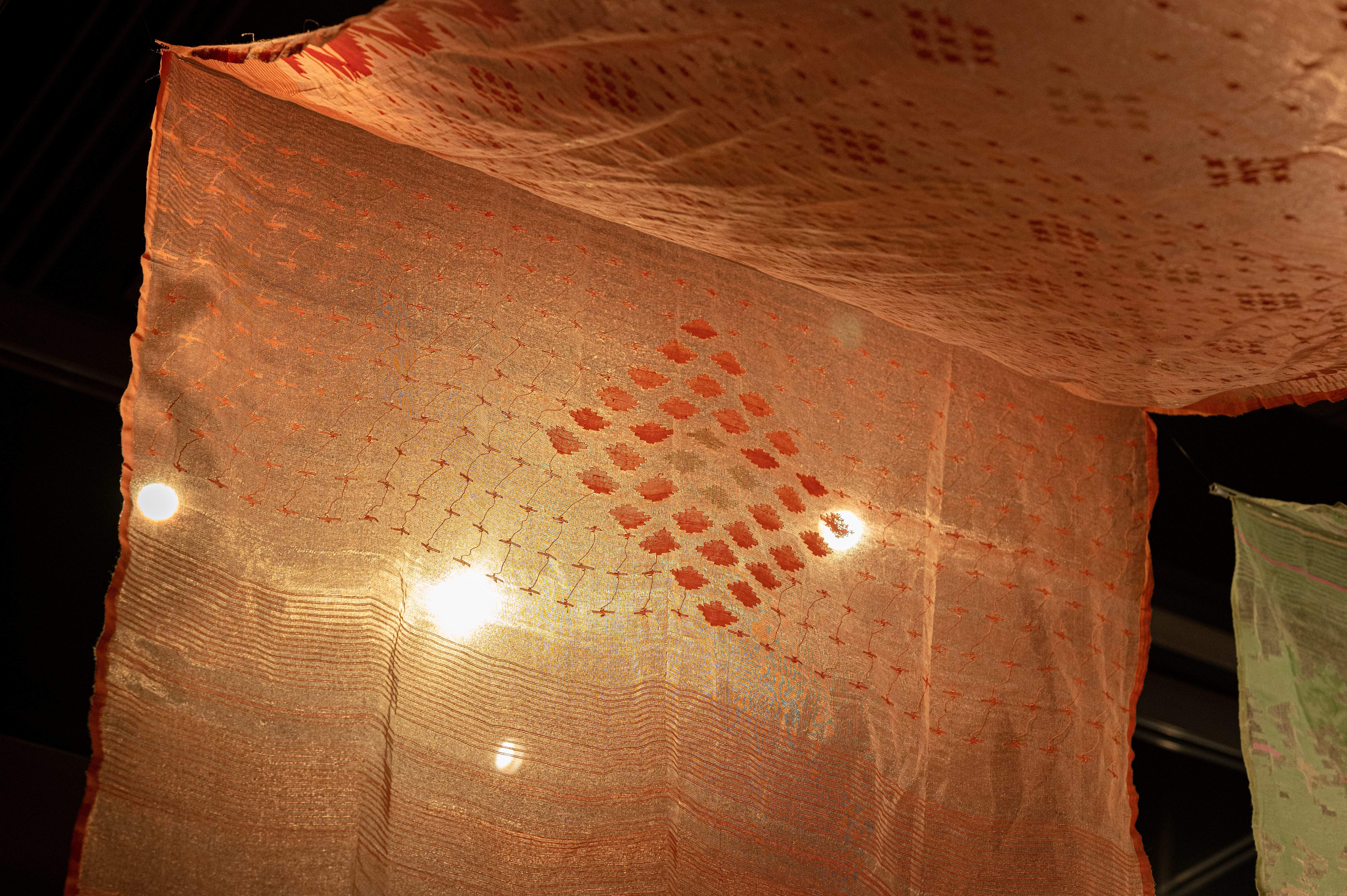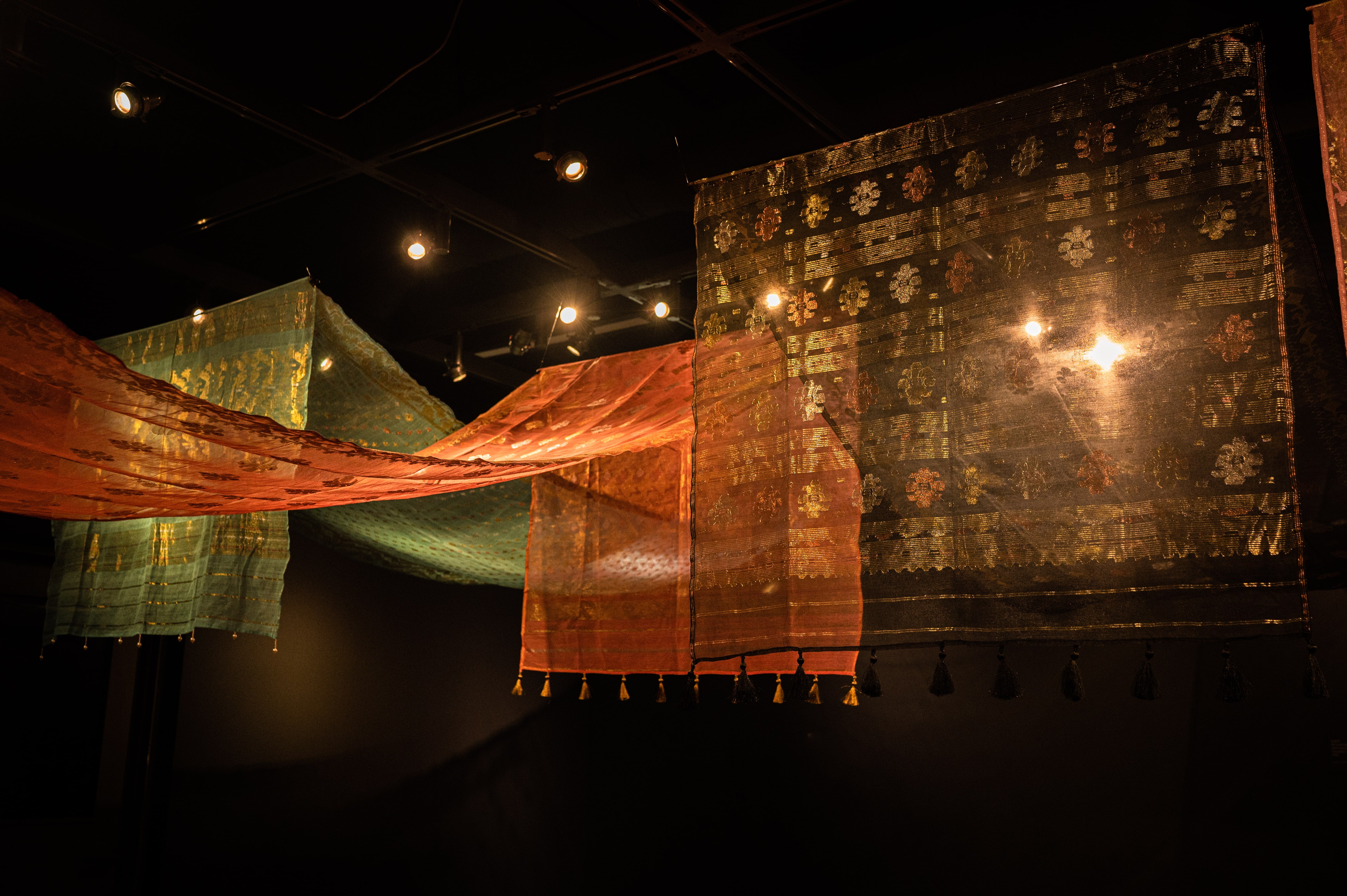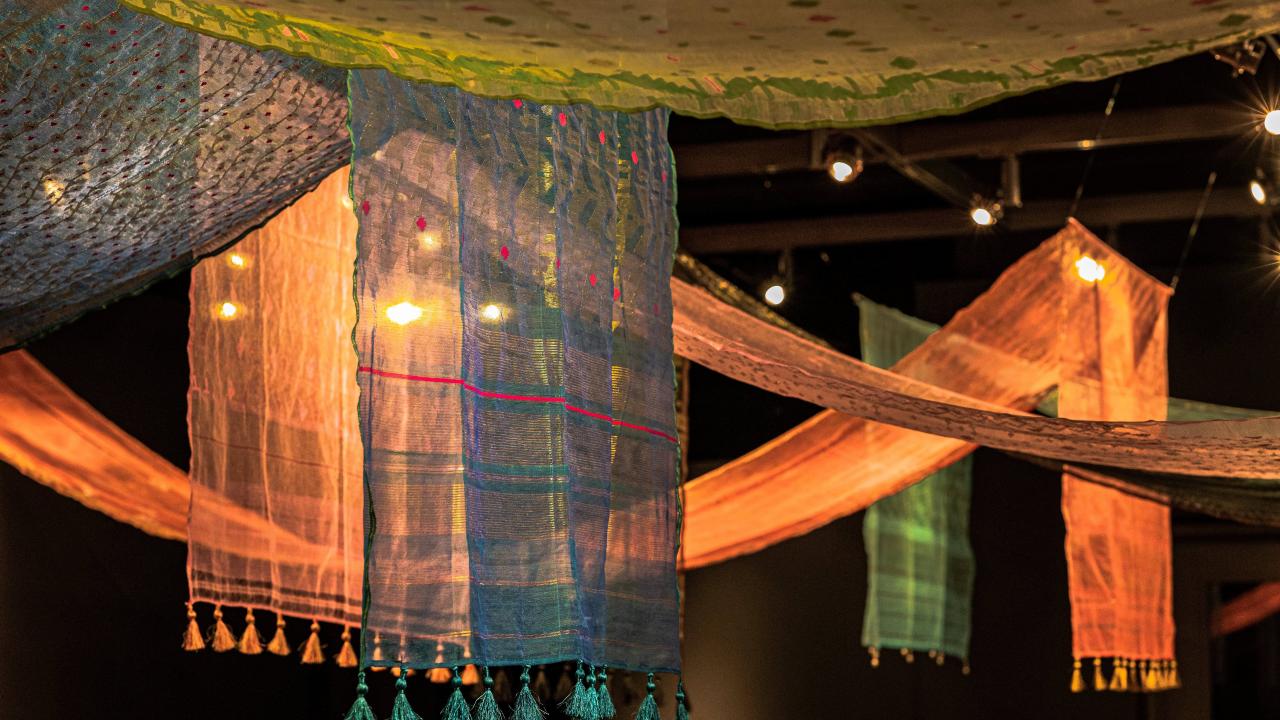Lunchable is a feature of the UC Davis Arts Blog that recommends art exhibitions or other attractions that can be viewed during a short lunch break or other short periods of free time. The Design Museum is open 12 – 4 p.m. Monday through Friday and 2 – 4 p.m. on Sunday.
“Woven Air: Dhakai Jamdani Textile From Bangladesh,” an exhibition of traditional Bangladeshi textiles noted for a weaving technique that creates surface decorations is currently on view at the UC Davis Design Museum. Hurry in before it closes Dec. 11.
This exhibition features fine-count Jamdani, the ornate textile that has experienced a revival in Bangladesh. Jamdani artisans employ weaving techniques of two different thread densities, with the denser wrap thread inlaid with the fine wrap thread to create tactile motifs and designs that are primarily flowers. Seven yards can take six to seven months to complete. In 2013 Jamdani tactile was declared an Intangible Cultural Heritage of Bangladesh.
The Jamdani textiles are strung along the ceiling of the Design Museum, with the ends hanging down just within reach. Visitors are encouraged to touch the textiles for the complete experience.
Walk up close to the Jamdani; you'll be able to see each woven thread. Each thread is so fine you’ll be able to peer through it. However, despite this delicacy, when you touch the Jamdani the fabric feels sturdy and malleable. It bends and twists with ease and the intricacy of the weaving keeps each thread strong. Some of the Jamdani feature tassels at the ends while others incorporate beads into the textile.

A coral Jamdani is immediately eye-catching upon entering the museum. The rich color of the textile is accented with red and silver geometric shapes resembling crosses and triangles. If you look closely, you can see the threads weaving back and forth in the fabric to create these shapes. I had never seen threads so thin before and was amazed that these could be handwoven into a material several feet long. This 60-thread count Jamdani was woven in Sonargaon, Bangladesh, and took approximately 20 days to complete.
An 80-thread count turquoise Jamdani is strewn a few feet away. This Jamdani includes gold and red floral patterns that are incorporated throughout the entirety of the fabric, running from end to end and adding a beautiful depth to the thin material. This Jamdani was woven in Dhaka, Bangladesh and took approximately 60 days to complete.
A stunning black Jamdani hangs between the colorful blues and pinks in the center of the room. This 84-thread count half silk Jamdani was woven in Sonargaon and took approximately 65 days to complete. I found myself particularly drawn to this Jamdani as despite it’s dark hue, the overhead lights shine through. The gold, silver, and bronze threads incorporated in a floral pattern shimmer in the light, bringing an overall mesmerizing effect to the fabric.

The exhibition also features a short film explaining the origins, history, and revival of woven air in the face of 17th and 18th-century colonialism. I enjoyed this aspect of the museum as it provided me with more depth and understanding of the culture surrounding Jamdani and the skill required to create this intricate textile.
After the exhibition, curator Hafsa Akter, a UC Davis graduate student in design and native of Bangladesh, will donate some pieces to the Jo Ann C. Stabb Design Collection at UC Davis, which supports and enhances the teaching and research goals of the Department of Design and its curriculum.
“Bangladeshi artisans and craftsmen can weave the finest quality hand-weaving textile,” said Akter. “With this exhibition, I wanted to showcase my culture and its rich background correlated with textile making.”
“Woven Air” is on view at the UC Davis Design Museum in Cruess Hall through Dec. 11. More information on the museum here.
